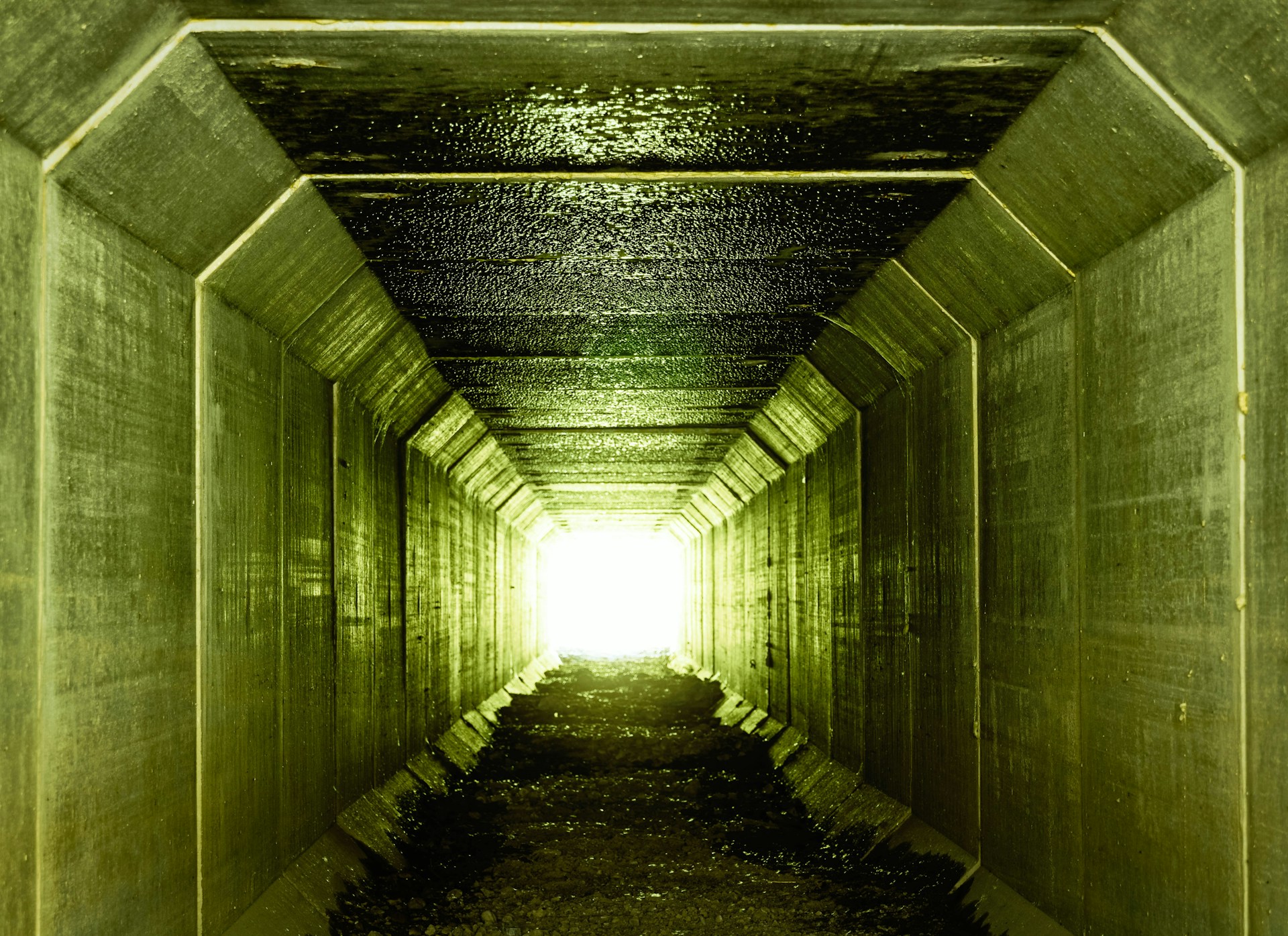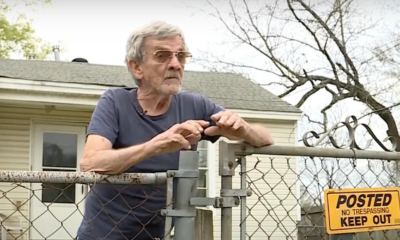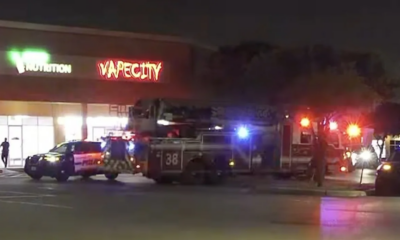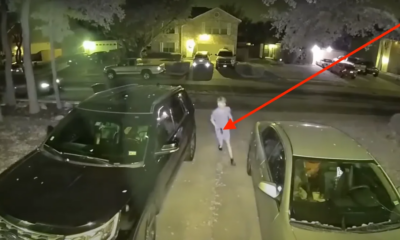Survival Stories
Billionaires’ Boom in Elaborate Survival Bunkers Amid Global Unrest

The business of fortified shelters is experiencing a significant boom, with billionaires leading the charge in constructing elaborate survival bunkers. This trend has been fueled by global unrest, escalating armed conflict, and increasing political tension. The wealthy elite are sparing no expense in ensuring their survival, with their preparations going far beyond the simple underground shelters often seen on reality TV shows.
These high-net-worth individuals are taking steps to protect themselves from a variety of potential threats, including civil unrest, cyberattacks, nuclear bombings, power grid failures, and drastic climate change events. Many are working directly with general contractors to build kitted-out end-times bunkers, while others are seeking the services of specialized companies.
Ron Hubbard, CEO of Texas-based Atlas Survival Shelters, has seen a surge in demand for his services. “It got really busy, and it seems like the phone hasn’t stopped ringing; World War III seems like it’s coming,” he shares. He adds that the news about Mark Zuckerberg’s bunker “caused a buying frenzy.” Hubbard is currently constructing a $7.5 million bunker for a client in Oklahoma that is in the design phase.
Robert Vicino, founder of Del Mar, California-based Vivos, which creates underground survival shelters, agrees with Hubbard’s sentiment. “Now that Zuckerberg has let the cat out of the bag, that’s got other people who share his status or are near his status starting to think, ‘Oh God, if he’s doing that, maybe he knows something that I don’t, maybe I should seek this out myself.'”
Al Corbi, president and founder of Virginia-based SAFE (Strategically Armored & Fortified Environments), which caters to custom designs for the uber-rich, notes that many billionaires are particularly focused on how to survive power grid failures. “A lot of these guys are buying up King Air or older planes that don’t have the electronic avionics, and keeping one or two older cars built before 1986 in their collection, so they’ll still function in an EMP [electromagnetic pulse].”
The average shelter that Hubbard sells “on a daily basis” is in the $200,000 to $400,000 range. Due to global demand, bunker air filtration systems are becoming scarce, so Hubbard bought up 711 of them in December to keep up with growing clamor. He reveals that the company is currently working with two billionaire customers in the U.S., “both related to Facebook,” but their bunkers cap out below $500,000.
At the higher end of the spectrum, Corbi is working on a spectacular project due to be completed in 2025. This is an island fortress created on a 200-acre property in the U.S., with cutting-edge tactical systems. “The shelter can withstand a blast one mile from ground zero,” says Corbi. “But that was almost incidental. The client [a business mogul] was saying, ‘I want to make sure that no one can get to my family,’ so we wound up literally building a 30-foot-deep lake [around the compound] skimmed with a lighter-than-water flammable liquid that can transform into a ring of fire. The only access to the island is a swing bridge.”
In addition to the fiery moat, Corbi’s project also includes water cannons that can take down parachuters, Apache helicopters, or any other airborne threat. “Then we took all the dirt removed for the lake to literally build a mountain as natural fortification around the property. And we cut a tunnel through with flame-throwers, gassing systems, a steel wall that closes midway that could stop a 16-wheeler going 80 miles an hour, and bollards at both ends.”
The next-level question becomes where to go if something somehow happens to the primary shelter. Corbi mentions elaborate tunnel systems that route people to alternate bunkers, plus “all types of extraction devices and systems, but that really isn’t something I can talk about; let’s just say, on all the super-yachts, there are helicopters and submarines.”
SAFE has partnered with Virginia medical consulting company Vital RN to offer state-of-the-art decontaminant booths, medical supplies, and rooms with full operating tables in bunkers. “We installed one on Long Island, and you feel like you are in the best-equipped Cedars-Sinai or Cleveland Clinic operating room!” says Corbi.
When it comes to secret passageways and hidden doors, many turn to Arizona-based Creative Home Engineering. Steve Humble, the president of the company, shares that a door can cost more than $50,000. “I’m wrapping a project for a client in the Phoenix area that includes nine secret doors that didn’t spare any expense,” says Humble.
Mike Peters, owner of Utah-based Ultimate Bunker, has found a niche in safe rooms that start at around $50,000 for an 8-foot by 8-foot space with an additional $30,000 for every window. “A lot of people in Hollywood have had their homes broken into, so they need somewhere to go in the middle of the night right by their bedroom or to put their whole bedroom on lockdown,” says Peters.
In the security business, privacy is paramount, but there are always exceptions. “In 50 years, we’ve never had a client harmed or their possessions compromised, so we pick our clients as much as they pick us,” says Corbi.
Our Thoughts
The escalating trend of billionaires investing in fortified shelters is both fascinating and disconcerting. It’s a stark reminder of the disparities in survival preparation between the ultra-wealthy and the average citizen.
While these underground fortresses, complete with state-of-the-art technology, may seem like an overreaction to some, they reflect a deep-seated fear of societal collapse amongst the wealthy elite.
The focus on power grid failures and EMP-proof vehicles underscores the sobering reality of our dependence on technology. It’s a wake-up call for everyone to consider their contingency plans in case of such events.
The ingenuity and creativity involved in designing these survival shelters are remarkable. From flame-throwing tunnels to secret passageways, these projects are pushing the boundaries of survivalist engineering.
Yet, this bunker-building frenzy also raises ethical questions. It’s important to ponder whether these resources could be better utilized in addressing the very threats these bunkers are built to withstand.
Ultimately, survival is not just about individual preparedness but also about collective action. As we marvel at these survivalist feats of engineering, let’s not forget the importance of fostering resilience in our communities.
Let us know what you think, please share your thoughts in the comments below.

Survival Stories
Rep. Mace’s Capitol Encounter Sparks Controversy and Legal Battle

James McIntyre, a 33-year-old from Illinois, has pleaded not guilty to a misdemeanor assault charge following an incident involving Rep. Nancy Mace on Capitol grounds. The alleged encounter occurred on a Tuesday night, leading to McIntyre’s arrest for reportedly assaulting a government official.
The incident unfolded when McIntyre approached Rep. Mace and offered to shake her hand. According to a police affidavit, two witnesses observed the interaction and described McIntyre as a man in his forties. When Mace extended her hand, McIntyre allegedly clasped it with both hands and “shook her arm up and down in an exaggerated, aggressive hand shaking motion.”
Witnesses managed to identify McIntyre through an internet posting, providing his name and photo to the U.S. Capitol Police. Mace corroborated the witnesses’ accounts, stating that she attempted to withdraw her hand but was unable to do so. She reported feeling intimidated and experienced pain in her wrist, arm, and shoulder following the encounter.
During the aggressive handshake, McIntyre reportedly stated, “Trans youth deserve advocacy.” Mace refrained from responding during the incident, later expressing her shock and discomfort.
After the event, Mace took to social media to inform her followers of the situation.
“I was physically accosted tonight on Capitol grounds over my fight to protect women. Capitol police have arrested him,” Mace shared in a post on X. “All the violence and threats keep proving our point. Women deserve to be safe. Your threats will not stop my fight for women!”
She continued to discuss the incident on social media, revealing in one post that she had spoken with President-elect Trump.
“Thank you, Mr. President, for checking in on me and standing up for women,” Mace wrote. “We cannot wait to see you back in the White House.”
In another post, she shared an image of herself with her arm in a sling, highlighting the physical impact of the encounter.
The incident comes amidst Mace’s outspoken opposition to transgender individuals using bathrooms that do not align with their biological gender. She has been particularly vocal against Rep.-elect Sarah McBride, a Democrat from Delaware, using the women’s restrooms on Capitol Hill.
Mace has reported receiving death threats and feels she is being “unfairly targeted” for her stance. Her proposed resolution, H.R. 1579, aims to restrict bathroom use in the House to facilities matching one’s biological sex.
Following McIntyre’s arraignment in the Superior Court of the District of Columbia, a magistrate judge ordered his release. Meanwhile, Mace’s office has not provided an update on her condition.
Let us know what you think, please share your thoughts in the comments below.
Survival Stories
Unseen Advantage: Law Enforcement’s Rapid Adoption of Optics

In the world of law enforcement and survival, the ability to quickly and accurately assess a situation can make all the difference. This is why the rapid adoption of optics by law enforcement agencies is hardly surprising. These tools provide a wealth of visual information, aiding in making more informed decisions. A key factor in the selection of these optics is the window size, but it seems that co-witness sights, which can sometimes occupy half of the entire optic window, often don’t receive the attention they deserve.
“Without question, the speed with which LE agencies have adopted optics is testament to the advantage they offer: more visual information that yields better decisions.”
Interestingly, suppressor height sights are frequently paired with optics. To comprehend why this particular sight remains a popular choice when selecting co-witnessing sights, we must journey back in time. Around 2009, shooters, both professional and non-professional, began to repurpose a solution initially designed for Close Quarters Battle (CQB) rifle work for use on pistols.
The Trijicon RMR, a compact electronic optic, was a welcome alternative to the larger optics typically seen on competition pistols. Its smaller size offered more holster options, less likelihood of snagging in the field, and a more robust window and housing. As a result, it addressed many of the issues raised by professional users, leading to a shift towards an optics sighting solution within the firearms community.
“The smaller footprint meant more holster options, less to get caught on while in the field, and a less delicate window and housing.”
This shift was spearheaded by individuals in the military, law enforcement, defensive firearms instruction, and competition professionals. With the introduction of these optics, performance improved, and new shooters were able to develop accuracy and speed more quickly. The instinctual focal plane response to stress, which previously had to be trained out, could now be utilized as an asset by Firearms Instructors working with students who had optics on their pistols.
“Performance increased, accuracy and speed developed sooner with new shooters, the intuitive and instinctual focal plane response to stress no longer needed to be trained out—and instead, the threat-focus could now be an asset used by Firearms Instructors working with students who had optics on their pistols.”
As the popularity of optics grew, the aftermarket and firearms manufacturers responded by supporting this “new” sighting system. However, one critical component of the system was often overlooked: the back-up sights. This oversight highlights the need for a comprehensive approach to firearm optics, one that considers all elements of the sighting system to ensure optimal performance and safety.
Our Thoughts
The adoption of optics in law enforcement is a testament to the technology’s effectiveness. It’s no surprise that tools that enhance visual information, thus enabling better decision-making, have become a staple in the arsenal of law enforcement agencies.
The rise of the Trijicon RMR is particularly noteworthy. Its compact size and robust design addressed many of the practical concerns of professional users, leading to a broader acceptance of optics as a sighting solution.
The benefits of these optics extend beyond their practicality. They have brought about a shift in the training of new shooters, turning the instinctual focal plane response to stress into an asset rather than a hurdle to overcome. This has undoubtedly contributed to the improved performance observed among new shooters.
However, the focus on the main optic often results in the neglect of back-up sights. This is a reminder that a comprehensive approach to firearm optics is necessary to ensure optimal performance and safety. After all, a tool is only as good as the system supporting it.
Let us know what you think, please share your thoughts in the comments below.
Survival Stories
Mental Resilience: The Overlooked Key to Survival Success

In the realm of survival, we often focus on the physical aspects: the gear, the skills, the terrain. Yet, one crucial element often overlooked is our mental health. As a seasoned survivalist and a licensed mental health therapist, I’ve experienced firsthand the importance of mental resilience in a crisis.
I recall an incident during my first exploration of Red Rock Canyon. The vast, humbling landscape was a sight to behold, but it was also a formidable challenge. Despite my preparations, I found myself lost on a wild game trail, far from the intended path.
“Okay, no big deal,” I reassured myself. “I’ll just retrace my steps.”
But the creeping sense of panic was undeniable. I was low on water, surrounded by thick brush, and far from any signal. It was in this moment that my mental health training became as crucial as my survival skills.
“If anyone can figure this out, I can.” I thought. Or rather, tried to convince myself….
The human brain has a built-in survival mechanism known as the fight-flight-freeze response. When faced with danger, our heart rate increases, our pupils dilate, and our breathing becomes rapid. While these physiological changes can enhance our strength and speed, they can also lead to panic attacks, which can be detrimental in a survival scenario.
Soldiers and first responders are trained to manage this response, and so can civilians. Understanding mental health first aid can be a lifesaver in personal emergencies or when trying to calm someone else in a crisis.
“Okay…” I thought, “let’s just backtrack a little. See if I can’t find the main trail.”
I remembered the acronym S.T.O.P., taught in wilderness survival classes: Sit, Think, Observe, Plan. I sat down, focused on my breathing, and began to regain control of my racing thoughts.
“Breathe.” I thought. “In through the nose, slow. SLOW. Hold it for a few seconds. Now release through the mouth even slower. Pause. Repeat.”
I knew I had to control my thoughts to improve my feelings and make good decisions. Catastrophic thinking like “I’m gonna die” or “What if a rattlesnake bites me?” could trigger panic mode.
“Okay, what do we know?” I thought. “I know I can’t be too far off-course, no more than a couple miles. I know a few people knew generally where I was going (but not the specific trailhead) and that I expected to be back by nightfall. I know I have survival training and some kit with me that would help me make it through the night if needed. I can do this.”
After observing my surroundings and assessing my resources, I made a plan. I decided to head in the direction of what I believed to be a road, using a large branch to tap the ground in front of me to ward off any potential rattlesnakes.
In the end, I made it back to my vehicle without having to spend the night in the desert. The experience was a stark reminder of the importance of mental health in survival situations.
In the aftermath of a crisis, people will be in panic mode. Knowing how to guide someone through the stresses of a crisis can help mitigate some of the negative effects of traumatic events.
First, ensure the scene is safe. Then, assess the group, find helpers, and triage the situation. Ground the person by asking them to describe their surroundings and their feelings. Encourage slow, deliberate breathing and validate their experiences.
Long-term effects of repeated activation of the fight-flight-freeze response can include panic attacks, nightmares, and flashbacks. If you’re prone to these symptoms and find the techniques described here aren’t helping, consider seeking help from a licensed therapist.
Remember, it’s not a matter of being weak or strong. Some of the bravest individuals I’ve worked with have sought therapy for their symptoms. It takes great strength and bravery to ask for help.
Since my experience in Red Rock Canyon, I’ve incorporated mental health first aid and awareness into my survival teachings. I’ve also adjusted my approach to hiking, ensuring I communicate my exact route and expected return time, carry more water, and stay focused on the trail.
Survival isn’t just about the physical. It’s about the mental too. And with the right skills and mindset, we can navigate any crisis with resilience.
Our Thoughts
This compelling account underscores the often overlooked but critical role mental health plays in survival scenarios. The author’s experience in Red Rock Canyon drives home the importance of not just physical preparation, but mental preparedness as well.
The fight-flight-freeze response, while instinctual, can be detrimental if not properly managed. As survivalists, we should heed the author’s advice and learn to control this response, much like soldiers and first responders are trained to do.
The S.T.O.P. method is a useful tool in regaining control of our thoughts and feelings in high-stress situations. It’s not just about physical survival skills, it’s about mental resilience and clarity of thought.
Moreover, the importance of understanding mental health first aid cannot be overstated. It can be a lifesaver, not just for ourselves, but for others in crisis.
Ultimately, the author’s story is a reminder that survival isn’t just about the gear, the terrain, or the skills — it’s about the mind too. And in the face of adversity, with the right mindset, we can navigate through any crisis with resilience.
Let us know what you think, please share your thoughts in the comments below.
-

 Tactical9 months ago
Tactical9 months ago70-Year-Old Fends Off Intruder with Lead-Powered Message
-

 Preparedness6 months ago
Preparedness6 months agoEx-Ballerina’s Guilty Verdict Sends Tremors Through Gun-Owner Community
-

 Tactical9 months ago
Tactical9 months agoVape Shop Employee Confronts Armed Crooks, Sends Them Running
-

 Preparedness4 months ago
Preparedness4 months agoGood Samaritan Saves Trooper in Harrowing Interstate Confrontation
-

 Tactical9 months ago
Tactical9 months agoMidnight SUV Theft Interrupted by Armed Homeowner’s Retaliation
-

 Survival Stories1 year ago
Survival Stories1 year agoEmily’s 30-Day Experience of Being Stranded on a Desert Island
-

 Preparedness4 months ago
Preparedness4 months agoArizona Engineer’s Headless Body Found in Desert: Friend Charged
-

 Preparedness4 months ago
Preparedness4 months agoBoy Saves Dad from Bear Attack with One Perfect Shot